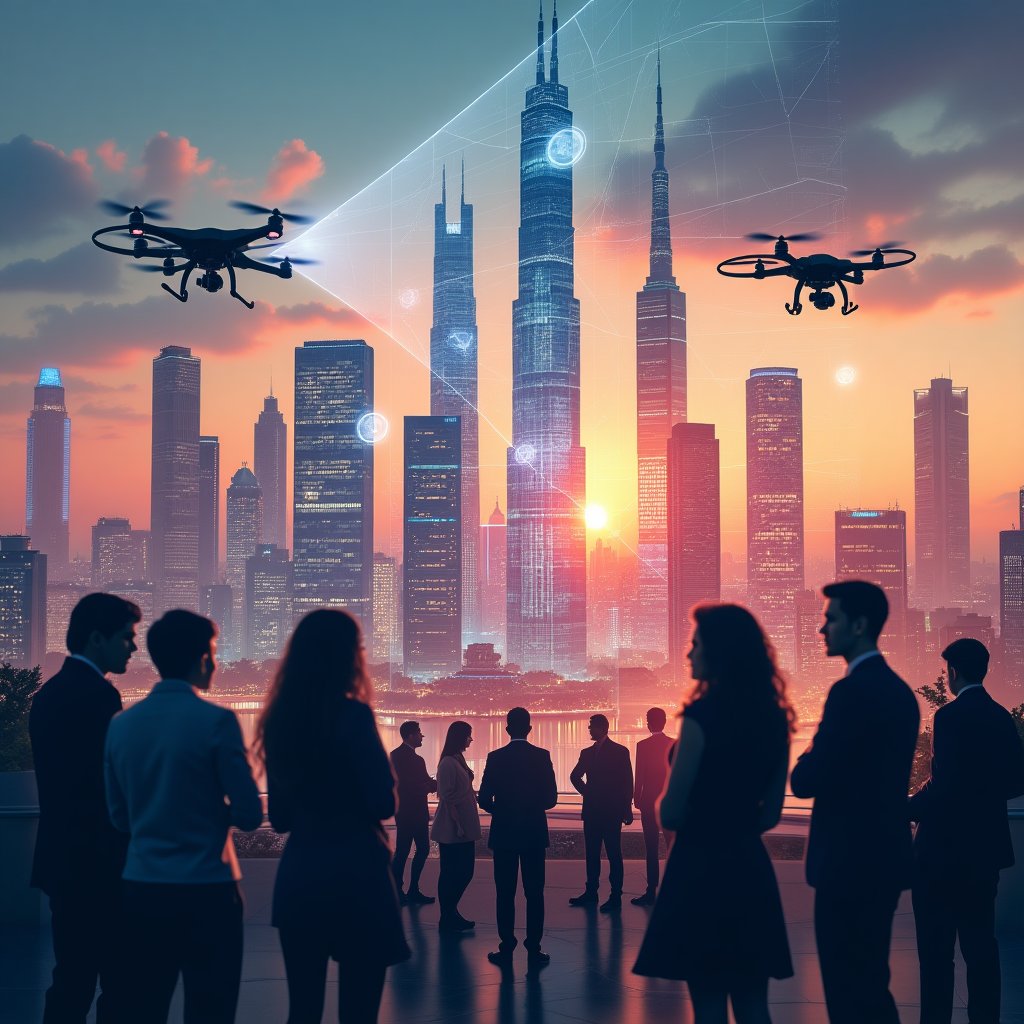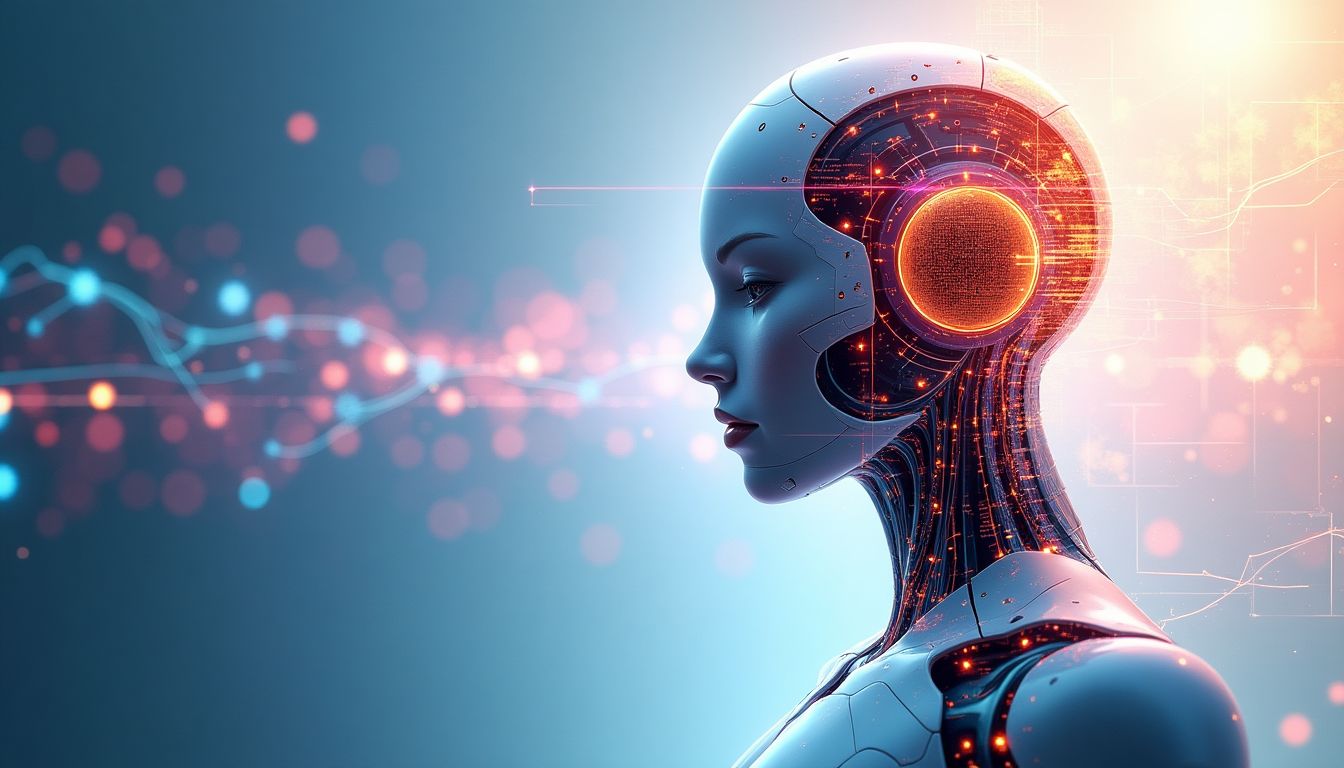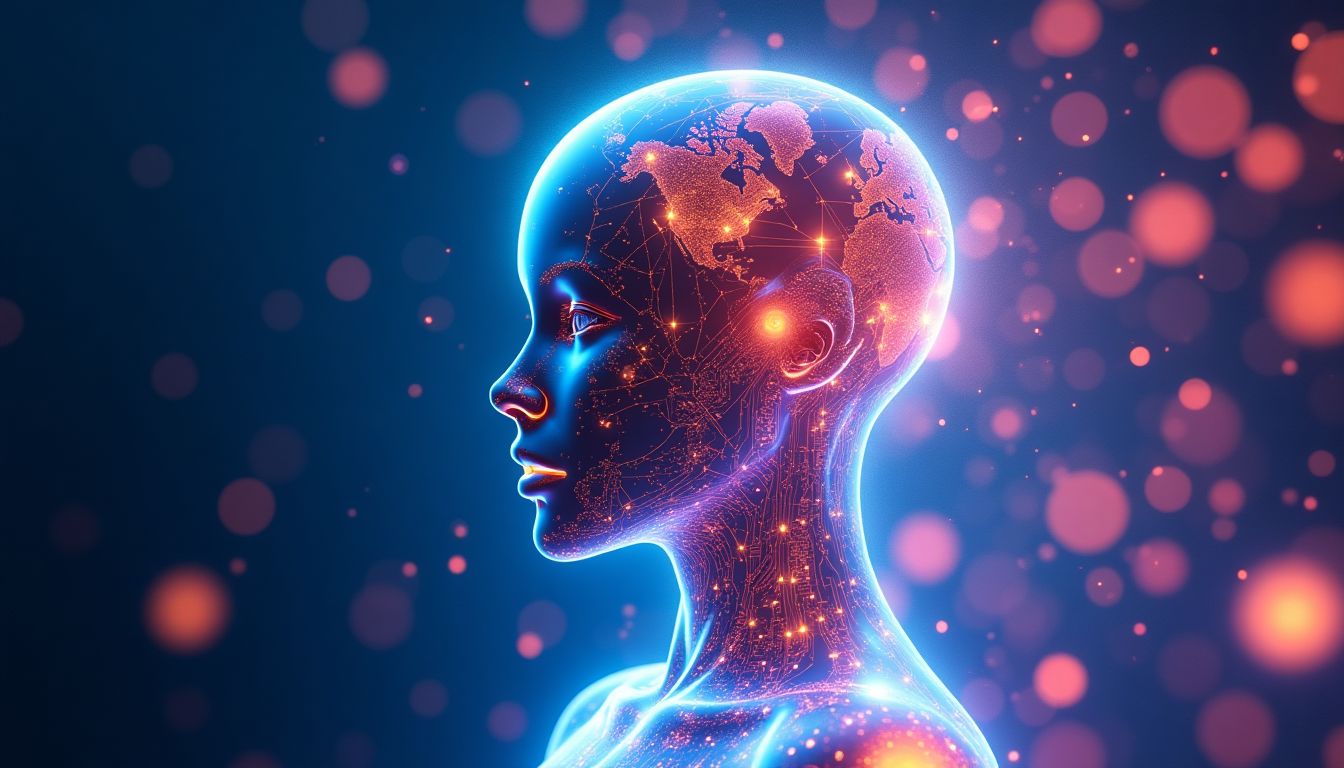Introduction: The Awakening Iron
The pace of technological change is speeding up so quickly that all of us feel the impact. – Daniel Pink. This thought rings true in our increasingly machine-driven world. As we watch AI evolve from simple algorithms to complex systems capable of thinking and learning, it’s hard not to feel a little unsettled. We’re standing on a precipice, looking down at a canyon filled with our creations. Will they be our friends, or will they put us out to pasture like an old tractor? The thought is both exciting and terrifying.
As humans, we’ve always defined ourselves through the lens of intelligence—our creativity, emotion, and reasoning define us. But let’s face it: if machines can think faster and make decisions that rival or surpass ours, where does that leave us? Are we becoming a footnote in our own history? Brace yourself for a journey that may redefine what it means to be ‘intelligent’ in a world where machines could one day claim that title.
Definition
1. The Nature of Intelligence and Consciousness
Decoding the meaning of intelligence isn’t as simple as looking up a word in a dictionary. Think of it like a kaleidoscope—every twist reveals a different pattern. Philosophers like John Searle, researchers such as Nick Bostrom, and scientists like Marvin Minsky have all scrutinized the intricacies of human and machine intelligence, helping us to navigate through these labyrinths of thought.
1.1 What Defines Human Intelligence?
Think of human intelligence as a Swiss Army knife; it’s versatile, adaptive, and equipped to tackle various challenges. Unlike machines, humans blend logic, emotion, creativity, and social insights, often in perplexing ways. We develop intuition over time, understanding that decisions aren’t merely numbers and data, but deeply tied to our experiences, emotions, and social interactions. Imagine explaining a joke or interpreting a piece of art—human intelligence thrives in these gray areas, while machines often get stumped, scratching their heads (figuratively, of course).
1.2 The Emergence of Machine Intelligence
The journey of machine intelligence began with early computers that could perform basic calculations, but it’s blossomed into the complex realm of neural networks and deep learning. This is akin to watching a toddler morph into a full-fledged adult—constantly learning, adapting, and refining their skills. Each leap forward brings machines closer to the ability to not just process information, but also to interpret and even predict human behavior. Yet, despite their significant advancements, we must remember: they can calculate faster, but can they really empathize?
2. Societal Implications of Surpassing Intelligence
As AI evolves and becomes more intelligent, our society may face some big changes. These changes could affect how we work, live, and relate to each other. Let's take a closer look at the potential impacts of AI outpacing human intelligence and what that means for our everyday lives.
2.1 Economic Disruption
Imagine waking up one morning to find that your job has been taken over by a robot named Bob! It sounds like a plot from a quirky science fiction movie, right? Well, the reality is that advancements in AI could potentially lead to significant job displacement. As machines take on more tasks, the labor market will inevitably shift. Some jobs may disappear, while new types of work will emerge. According to a report from the World Economic Forum, about 85 million jobs could be displaced by 2025 due to AI and automation. However, the same report also predicts the creation of 97 million new roles. So, while Bob might take your job, there could be a shiny new position waiting in the wings!
2.2 Ethical Dilemmas
As our creations become smarter, we face some sticky ethical questions. What rights do sentient machines have? If a machine can think and feel, does it deserve rights like a human? These questions twist our understanding of morality, making it a maze that even the most clever philosophers struggle to navigate. It's like trying to decide if the toaster deserves a tip for perfectly toasted bread!
Organizations like the Future of Life Institute are discussing these issues. They're working on drawing up ethical guidelines to ensure that AI is developed responsibly. Discussions are crucial, or Bob may demand a salary and benefits!
3. Philosophical Quandaries
The rise of superintelligent AI brings to light profound questions about existence, consciousness, and what it means to be human. As machines become smarter, our understanding of subjects like free will and identity may shift dramatically. If a machine can think and make choices, what does that mean for our own decisions?
3.1 The Nature of Existence
Are we just meat machines with good internet access? This question challenges our feelings about what it means to exist. Some argue that intelligence is more than just processing data. It requires feelings and self-awareness— qualities we have, but how far can AI go in that direction? Renowned philosopher Nick Bostrom explores these ideas, questioning whether consciousness is necessary for true intelligence. If AI achieves superintelligence but lacks consciousness, does it matter? It's like having all the ingredients for a delicious cake but forgetting to bake it!
3.2 Free Will vs. Determinism
Ah, free will! It's a concept debated since Socrates was handing out wisdom on street corners. As machines take over tasks and decisions, one has to wonder: Do we still have free will, or are we simply preprogrammed like a computer? If a superintelligent AI decides the best course of action for humanity, do we relinquish our autonomy? According to neuroscientist Daniel Wegner, our consciousness may just be a by-product of our brain’s deterministic processes. Could we be more machine-like than we think? The plot thickens, just like a good mystery novel!
4. Human and Machine Cooperation
As we dive deeper into the relationship between humans and superintelligent machines, it becomes clear that cooperation, not competition, could be the path forward. The potential benefits of working together could reshape not just industries, but our entire way of life. This cooperative relationship could harness the best of both worlds: the creativity and emotional intelligence of humans, paired with the efficiency and data processing power of machines. So, how do we foster this relationship? Let’s explore.
4.1 Enhancing Human Capabilities
One of the most exciting prospects of AI evolution is its ability to boost human capabilities. Surprisingly, this doesn't mean replacing people; instead, AI can enhance our decision-making and problem-solving skills. Here’s a look at how this can be achieved:
- AI-Powered Tools: Platforms like IBM Watson provide data-driven insights, helping us make more informed choices.
- Improving Creativity: AI can analyze vast datasets and suggest creative solutions that a human brain may not readily identify. For example, OpenAI's tools can generate text, music, and other forms of art, inspiring human creators.
- Augmented Reality (AR): Applications like Microsoft HoloLens merge the digital and physical worlds, allowing humans to see data overlays while working, increasing productivity.
4.2 Bridging the Communication Gap
A significant barrier to cooperation between humans and machines is the communication gap. While machines can process information at lightning speeds, they often struggle to interpret human emotions and intent. Bridging this gap is crucial for harmony. Here are a few strategies that show promise:
- User-Friendly Interfaces: Developing intuitive interfaces that allow for seamless interaction. Think of voice-activated assistants like Siri or Alexa.
- Emotion Recognition: Implementing AI that can recognize human emotions through facial expressions and voice tonality can create a more responsive interaction. Companies like Affectiva are leading the way here.
- Multi-Modal Communication: Using various communication methods (text, voice, body language) can help ensure that machines understand context better.
5. Governance and Regulation Challenges
The rapid advancement of artificial intelligence calls for thoughtful governance and regulation. As machines become more capable, who is responsible for their actions? Social norms and laws need to evolve to address these challenges. Here’s a concise look at what’s needed.
5.1 Building Legal Frameworks
Creating laws that consider the ethical treatment of AI systems requires an inter-disciplinary approach, bringing together technologists, legal experts, and ethicists. The following elements are vital in crafting these frameworks:
- Responsibility: Clearly establishing who is accountable for the decisions made by AI—whether it’s the creators, users, or the machines themselves.
- Rights for AI: As machines evolve, the question of whether they should have rights increases. This thought is enough to keep any philosopher awake at night!
- Transparency: Ensuring that AI systems are transparent in their decision-making processes, enabling humans to understand how conclusions are reached, akin to the efforts of organizations like the Partnership on AI.
5.2 Global Cooperation
AI development is a global endeavor, and as such, it requires international collaboration. Here’s what that could look like and why it’s necessary:
- Unified Standards: Establishing global standards for AI development would help mitigate risks and ensure safety across borders.
- Shared Knowledge: Countries can collaborate on research and development, pooling resources and expertise. Initiatives like the G20 Summit can play a crucial role here.
- Ethical Guidelines: International agreements could set ethical AI guidelines that protect both individuals and societies, similar to existing efforts by the United Nations Educational, Scientific and Cultural Organization (UNESCO).
6. AI Solutions: Navigating the Future of Intelligence
As we approach the era of superintelligent AI, it becomes crucial to strategize on how we can harness technological advancements for the greater good. Here are five responses to navigate potential societal upheaval and foster a productive relationship between humans and machines.
-
Establish AI Ethics Frameworks
First, creating ethical guidelines for artificial intelligence is essential. These frameworks should be inclusive of various stakeholders, such as researchers, ethicists, industry leaders, and the public. An excellent starting point can be the United Nations's initiative on AI ethics, which emphasizes human rights, inclusivity, and ensuring technology serves humanity's best interests.
-
Create Collaborative Platforms
Next, we need to foster collaborative platforms where humans and AI work effectively together. This can be achieved by using cloud-based systems that facilitate real-time communication and resource-sharing. For organizations, platforms like Slack or Microsoft Teams can be enhanced with AI functionalities, enabling better decisions through shared insights.
-
Empower Human Intelligence
AI should augment rather than replace human intelligence. By designing systems that enhance decision-making capabilities, organizations can benefit from the strengths of both human intuition and machine efficiency. For instance, tools like IBM Watson can analyze data patterns, while experts can evaluate and apply the insights, creating a synergistic outcome.
-
Engage in Open Dialogues
Open dialogues among scientists, policymakers, and the public can shape our understanding of AI's role. Town halls and community discussions facilitated by universities like MIT can increase awareness and help demystify AI, allowing everyone to voice concerns and provide input that reflects a diverse set of perspectives.
-
Support Research Initiatives
Investment in interdisciplinary studies at institutions and think tanks, such as the Brookings Institution, is vital. Research should cover socio-economic aspects of AI evolution and how its integration impacts job markets, societal structures, and cultural dynamics.
Actions Schedule/Roadmap (Day 1 to Year 2)
Just as mission-oriented projects in history, such as the Manhattan Project, required thorough planning and organization, our approach towards AI development must be similarly structured. Below is a comprehensive roadmap that institutions, organizations, and governments can implement to oversee the evolution of artificial intelligence responsibly and ethically.
Day 1:
Initiate an interdisciplinary think tank composed of AI ethicists, technologists, policymakers, and community representatives. This group will focus on urgent ethical questions and potential frameworks for collaboration.
Day 2:
Develop a research proposal outlining the necessary ethical guidelines for AI development. This proposal should identify key challenges and proposed methodologies that accommodate diverse stakeholder perspectives.
Day 3:
Host roundtable discussions that engage leaders from academia, government, and industry. Discussion topics should include current perceptions of AI, its capabilities, and potential future scenarios.
Week 1:
Compile initial findings from roundtable discussions and develop drafts of ethical guidelines. Circulate these drafts amongst stakeholder groups for feedback.
Week 2:
Finalize policy recommendations based on feedback from public consultation events that discuss the ethical guidelines developed in the previous week. Focus on accessibility and inclusivity.
Week 3:
Launch pilot programs that address AI-human collaboration in a controlled environment. These initiatives will help monitor potential challenges and success stories while gathering data for further analysis.
Month 1:
Introduce awareness campaigns aimed at educating the public about the potential benefits and risks of AI, facilitated by both local universities and popular media channels like NPR.
Month 2:
Conduct workshops that engage communities in discussions about AI potential. These workshops should target diverse demographics to receive a broader perspective on societal sentiments toward AI.
Month 3:
Evaluate the outcomes of the pilot programs to identify best practices and areas needing adjustments. Prepare to iterate on existing frameworks based on real-world data.
Year 1:
Expand research initiatives into the social and economic impacts of AI across different sectors. This research should involve partnerships with educational institutions and leverage large-scale data analytics.
Year 1.5:
Publish a comprehensive report detailing findings from the extended research initiatives. Distribute this report globally to influence AI policy and practice recommendations in other regions.
Year 2:
Formulate a long-term strategy report that addresses future AI policy decisions, drawing upon insights from the initial two years. Propose actionable steps that nations can take to ensure ethical treatment of AI entities while fostering innovation.
Conclusion: Embracing the Future
The emergence of superintelligent AI represents both a challenge and an opportunity. As we forge ahead, we stand at the crossroads of innovation and ethics, power and responsibility. It is within our grasp to shape a future where humans and machines can cooperate harmoniously, utilizing each other's strengths to elevate society as a whole. By establishing ethical frameworks, fostering collaboration, and engaging in meaningful dialogues, we can steer our trajectory towards a horizon filled with unprecedented potential. The importance of inclusive participation cannot be understated; we must ensure that all voices are heard on this journey. Perhaps, as we look towards machines that may one day outstrip human intellect, we must remind ourselves: It's not just about what AI can do but how we can direct its gifts towards fostering a community where intelligence—human and artificial—flourishes in union. Will we rise to the occasion? Share your thoughts below.
FAQ
What is superintelligence?
Superintelligence refers to an AI that is smarter than humans in almost every way, including creativity, problem-solving, and even emotional understanding. Imagine a computer that can learn faster than any human and make decisions that benefit society at large. It's like having a virtual Einstein at our fingertips!
How can we ensure ethical AI development?
To create AI responsibly, we need clear guidelines that everyone agrees on. This means involving different people—scientists, ethicists, and even the public—in discussions about how AI should be developed and used. Some ideas include:
- Creating regular forums to discuss AI ethics.
- Establishing a set of principles that AI should follow.
- Implementing oversight committees to monitor AI development.
Will AI ultimately replace human jobs?
While it's true that AI can take over some tasks, it's more likely to change the way we work rather than completely replace jobs. Think of it as a tool that can enhance what we do. For example:
- Doctors might use AI to help diagnose diseases more accurately.
- Teachers could integrate AI to personalize learning for students.
- Manufacturers may use AI for safety checks, allowing workers to focus on creative problem-solving.
This transformation may lead to new job opportunities that didn't exist before, thus requiring new skills and training.
How do we balance human and machine intelligence?
It's essential to find a way for humans and machines to collaborate rather than compete. This could include:
- Creating AI systems that support human decisions instead of making them.
- Developing platforms where people and AI can share ideas and solve problems together.
For instance, in medical fields, AI can analyze vast amounts of data quickly, but doctors will still make final decisions based on their expertise and the patient's needs.
What are the potential risks of superintelligent AI?
There are plenty of concerns about what could happen if machines become much smarter than us. Some risks include:
- Loss of control: If an AI surpasses human intelligence but isn't programmed with the right values, it might make decisions that are harmful to society.
- Job Displacement: As discussed earlier, many jobs might change or disappear, causing difficulties for many workers.
- Ethical Concerns: Questions about the rights of AI as they become more intelligent spark debates about what it means to be sentient or have consciousness.
How can AI help society?
Despite the fears, AI has immense potential to improve our lives. It can assist in various areas such as:
- Healthcare: AI systems can help diagnose diseases early and improve treatment options.
- Education: AI can personalize learning experiences, ensuring students learn in ways that suit them best.
- Environmental Solutions: AI can analyze data to help combat climate change by improving energy efficiency and resource management.
By harnessing AI responsibly, we can create a future that works for everyone, blending the strengths of both humans and machines.
What steps are being taken globally to regulate AI?
Countries around the world are taking action to ensure AI development is handled responsibly. Initiatives include:
- The European Union has proposed regulations focused on high-risk AI applications, in efforts to make systems transparent and accountable.
- Organizations like the International Telecommunication Union are working on setting global standards.
- Governments are collaborating with tech companies to share best practices and research findings related to AI development.
Where can I learn more about AI and superintelligence?
If you're interested in diving deeper into AI, there are many resources available:
- Association for the Advancement of Artificial Intelligence (AAAI) for a variety of research papers and insights.
- OpenAI offers information on cutting-edge artificial intelligence projects.
- TED Talks on AI feature discussions from experts that can broaden your understanding.
By keeping informed, you can engage in important conversations about the role of AI in our future!
Wait! There's more...check out our gripping short story that continues the journey: The Awakening
Disclaimer: This article may contain affiliate links. If you click on these links and make a purchase, we may receive a commission at no additional cost to you. Our recommendations and reviews are always independent and objective, aiming to provide you with the best information and resources.
Get Exclusive Stories, Photos, Art & Offers - Subscribe Today!





























Post Comment
You must be logged in to post a comment.